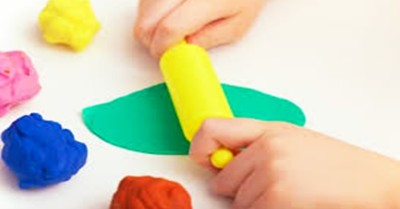Playdough is such a versatile material. It provides numerous benefits to children as they manipulate it, it is safe and soothing and provides children with a satisfying sensory experience.
The Benefits of Playing with Playdough
There are many benefits of children playing with playdough including developing fine motor skills, creativity, vocabulary, literacy and numeracy and much more. Playdough also:
- Motivates children to explore its sensory qualities
- Strengthens small fingers, hands and wrists
- Builds children's imagination as they play with it, creating as they wish
- Developing self-esteem - no right or wrong to play
- It's calming and helps children relieve stress through their hands
- Involving them in making the dough and discussing things like colour and texture, and what happens when liquids are added
Fine Motor Development
While children are busy rolling, poking and squishing dough, they are building strength in the little muscles in their fingers and hands. These same muscles are used for later skills such as cutting and holding a pencil with a pincer grasp.
Children are also learning hand-eye coordination as they use their hands to shape play dough. Each way children shape play dough—pushing, pulling, squashing, squeezing, rolling, chopping, cutting—builds fine motor development and strengthens their fingers and wrists.
Creativity and Imagination
While playing with playdough, children begin to use symbolic thinking or pretending the playdough is something else. This is an important part of cognitive development and how children are able to express their ideas.
Younger children begin to make simple, familiar items such as worms, pancakes, pizza and balls while preschool children will typically see more complex playdough creations develop. When playing with friends, these creations can become much more involved, with different characters and buildings, which enables children to work together and explore ideas.
Science and Math
Making playdough with children enables them to explore measuring, mixing, experimenting, predicting what will happen and watching this gooey mix transform into playdough. Add in colours, mix colours to create new colours can create new experiences for children. You can introduce new vocabulary words such as those to describe texture (grainy, smooth, lumpy) and discuss the process (what would happen if we added more flour? Less water?).
As children are shaping play dough, they are also learning about cause and effect. You can further these experiences by engaging in conversations with your child during this process. Ask open-ended questions and allow experimentation.
Loose Parts With Playdough
Adding other elements to playdough enables a variety of learning opportunities for children to explore.
Poking and pulling out different objects strengthens finger muscles, hand-eye coordination and concentration.
Set playdough out with a variety of loose parts such as:
- stones, sticks
- wooden letters
- google eyes
- shells
- coloured rice
- glass pebbles
- pabbles
- dry pasta
- sequins
- cake cases
- cookies cutters
- lids
- drinking straws
- shells
- wooden blocks
- buttons
- pipe cleaners
- objects from nature
- toy vehicles
- pine cones, sticks, bark, leaves
- muffin tins, egg cartons, chocolate boxes,
- Fabric, netting and ribbons
Having additional extras provides new challenges and increases creativity and provides children with a multi-sensory experience.
Making Playdough
When making play dough all you need is a few ingredients to mix together. Children can help by measuring quantities and mixing ingredients together.
Easy Playdough Recipe:
- 1 cup white flour
- 1/2 cup salt
- 2 tbsp cream of tar tat
- 1 tbsp water
- food colouring
Combine ingredients together to make a dough.
Store in an airtight container.
Here are a few recipes to try:
Snow Dough
Calming Playdough - such as lavender, rose and citrus playdough
Make playdough interest and therapeutic by adding scents, colours and textures such:
Scents and Colours
- cocoa powder
- ginger
- cinnamon
- turmeric
- fruit juices
- food colouring
- food flavouring
- essential oils
- lavender
- herbs
- fruit tea
- paint
Textures
- rice
- couscous
- coriander seeds
- poppy seeds
- sesame seeds
- sawdust
- sand
- pebbles
- rock salt
- tiny pasta
- glitter
- glitter glue
- sequins
Playdough keeps children occupied, is a therapeutic experience as they squish it, mould it, roll it, punch it, cut it, pinch it, break it and flatten it and children use their imagination in their creations.
References:
Benefits Of Playdough, The Imagination Tree
Benefits Of Playdough In Early Childhood, Empowered Parents
Purpose Of Playing With Playdough, Michigan State University
